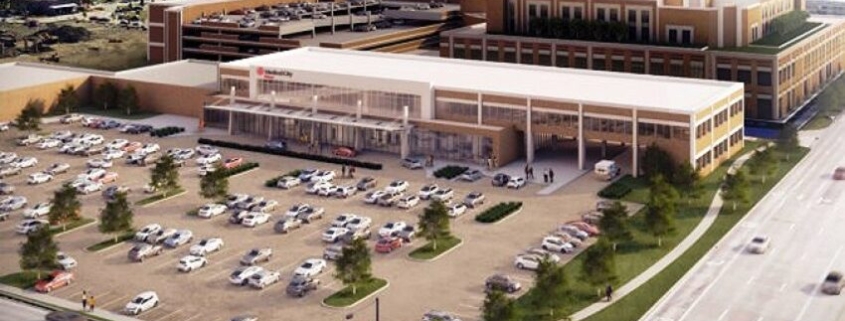In the wake of the pandemic, collaboration within and among organizations has become increasingly important—if not necessary.
While turbulent times forged new partnerships across all sectors, some of these preserved and further strengthened their key competencies. Chestnut Funds and Anchor Health Properties’ newly launched Chestnut Healthcare Fund II stands as an example of what can be achieved through perseverance and the successful identification of off-market opportunities. Chestnut Healthcare Fund I was launched in 2015 and raised a total of $50 million, which included the acquisition of 52 assets through direct or joint venture transactions.
In an interview with Commercial Property Executive, Anchor Health Properties Chief Investment Officer James Schmid and CEO Ben Ochs, alongside Chestnut Funds CEO Steen Watson, elaborate on their partnerships and how Chestnut Healthcare Fund I’s success fueled their drive to initiate its successor.
CPE: Tell us more about Chestnut Healthcare Fund II. How does the investment vehicle differ from its predecessor, Chestnut Healthcare Fund I?
James Schmid: The new fund is a follow-up to its successful predecessor, which was our initial health-care real estate acquisition fund. The first fund raised just under $50 million in equity, and we have recently completed placement of these funds. The new fund will continue the investment strategy of medical office acquisitions—primarily core and core-plus assets in major U.S. markets—both through direct ownership and through joint venture investments with institutional equity capital.
CPE: Elaborate on the partnerships you’ve created since you launched Fund I.
Ben Ochs: The initial fund has invested across multiple joint venture acquisitions with both The Carlyle Group and Harrison Street Real Estate. Each of these partnerships continues to expand.
CPE: What kind of assets are you targeting and why?
James Schmid: Core and core-plus medical office acquisitions in major markets continue to be the broadest area of focus. These assets continue to offer attractive risk-adjusted returns and ample debt market liquidity to provide leverage and enhance returns. The Anchor platform has acquired over 50 percent of its recent investments in an off-market fashion, allowing for the continued volume of investment opportunities despite increased investor appetite for sector investments.
CPE: What are the markets you are targeting through Chestnut Healthcare Fund II and why?
Steen Watson: The target market focus generally overlaps with the largest 30 U.S. markets, though we have had particular success building scale in markets such as Boston, New York, Philadelphia, Washington, D.C./Baltimore, Charlotte, N.C., Atlanta, Nashville, Tenn., Denver, San Diego and Seattle.
CPE:Tell us more about the factors and conditions that stimulate growth in the aforementioned areas.
Steen Watson: We carefully evaluate factors such as local demand for health-care services, local population trends, local health-care insurance trends, constraints of supply of new facilities, needs of local health-care systems and medical tenancy, and local and state health-care regulations to make informed decisions about investing in a given market and for a given target asset.
CPE: What are the major changes the medical office sector has seen since the onset of the pandemic?
James Schmid: Perhaps the biggest change was the one that didn’t happen. Health systems and their patients continued to need medical office space to handle patient health-care needs. While elective surgeries—typically the highest margin contributor to medical groups and health systems—generally shut down for 90 to 120 days at the beginning of the pandemic, they quickly reopened and regained previous—and backlogged—case volumes.
While telemedicine became a tool for health-care practitioners in certain circumstances, it did not serve as a replacement for physical space to handle true clinical and acuity needs of patients. Going forward, we see telemedicine as a complement to medical office space for lower-acuity and administrative functions, as opposed to a replacement for said space.
CPE: How do you see the sector going forward?
Ben Ochs: An aging U.S. population will continue to drive demand for additional health-care services in the years to come. Health systems will continue to push to capture market share through expansion into strong demographic locations and through the use of modern, efficient outpatient facilities.
Dedicated facilities for inpatient rehabilitation, behavioral health, memory care and substance abuse should continue to be in demand, fueling opportunities for additional development.
Source: Commercial Property Executive




